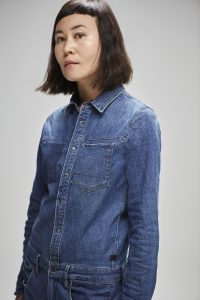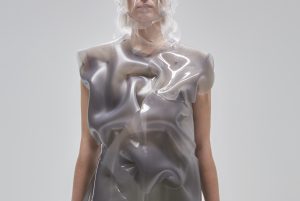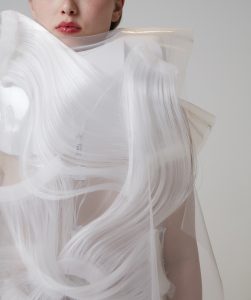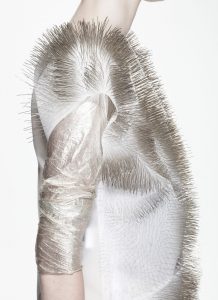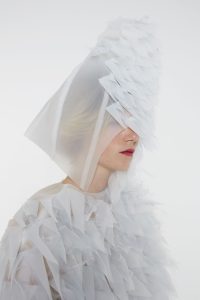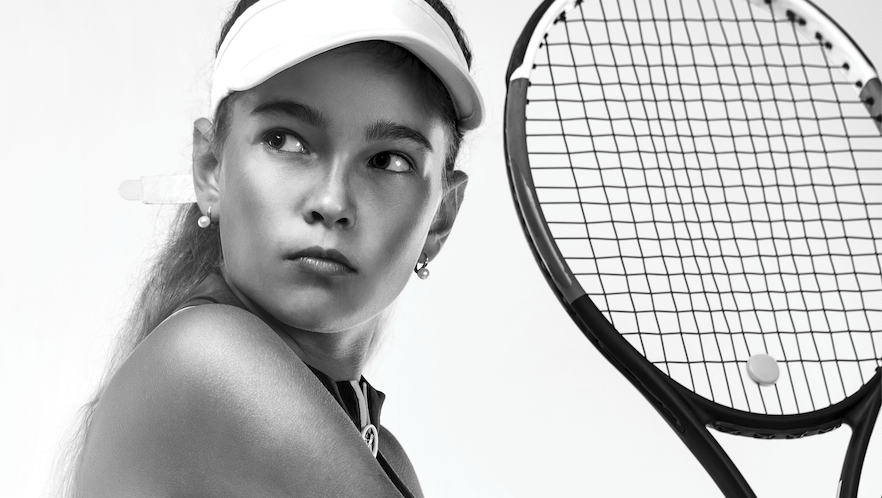Fashion has been defined by all different kinds of innovations and styles. Now, Ying Gao is challenging everything we knew about it, in a movement to incorporate technology and raw human emotion into the clothes she designs.
Gao is an acclaimed designer and professor at the Université du Québec à Montréal and previously served as the head of the Fashion and Accessories Design Department at the Geneva University of Art and Design. Yet she discovered her passion for design much earlier, beginning her dedication to fashion as simply a child mesmerized by clothes–the Yves Saint Laurent exhibition in Beijing, to be exact.
She lived in communist China during the 80s, where everyone was uniformed and devoid of voguish expressions. But when her mother took her to see the exhibit, she was finally exposed to the wonders of elegant fashion. That night, Gao drew all night long. And from that moment, she began to develop her identity through the art of fashion.
Her passion continued all throughout her adolescence, but when she moved to North America to pursue her dream, she found that the industry did not exactly promote the same individuality that made her love fashion in the first place.
While she embraces aspects of the fashion industry, she draws a comparison between clothing, or what she sees as the substance of fashion, and fashion, the presiding phenomenon. According to Gao, there are clothes in North America that are not a part of the fashion industry, or vice versa. The fashion industry is, therefore, a complex balance between what can be defined as fashion, what can be defined as clothing, and which pieces call for an intersection.
She continued to explore the creativity and innovation that inspired her design. In the early 2000s, when technology was rising in prominence, she had the idea to combine tech with textiles to develop something much larger than what made up the fashion industry. It was then that Gao became a fashion revolutionary.
“Throughout my interactive garment projects, which unite my two areas of interest (fashion design and media arts), I wanted to pursue the structure of clothing,” Gao said. “But most of all, I wanted to explore the possibility of working with intangible elements that are found in our physical world.”
Gao is particularly interested in creating shapes from intangibles, such as air and light, which she cites as a key component of both her creative and manufacturing processes. In order to replicate this sensation, she integrates fabric so light that it appears invisible as if she was simply giving the air a visible form. She has garments that can be activated by voice or light alone, and clothes that embrace the unpredictable, ever-changing nature of the world around us– something, she compares to a metamorphosis.
“I would like for people to understand that I’m not creating science fiction. These are not the clothes of the future. These objects represent for me the here and now. The ideas I express through these objects reflect the questions and uncertainties that we are already experiencing today,” Gao says, after noting that sensory tech is already present in fields other than fashion.
With technology becoming prominent at increasingly significant rates for our society, Gao began to look closely into the way we, as humans, interact with it. She was encouraged to look into more biometric data that observe stress levels and emotions, making this question of relation even more important.
She observed that there was a destructive and voyeuristic nature to monitoring ourselves closely with sensors that could trace such data, one that could not possibly accurately represent emotions. This kind of scientific look into human behavior is not, Gao clarifies, the reason she chooses to design what she does.
Her true mission? To examine such technology in a poetic dimension that gets the true message across.
For example, her project, “Incertitudes,” looks closely at the uncertainty of the future that we often allow to define ourselves, noting that we tend to exist not for what is around us but what we guess is to come in the future.
The garments of this artistic study are activated by voice, but Gao utilizes technology as only a channel for her metaphorical ideas. The pieces engage their audience on a conversational level, filled with misunderstandings and unreliability. It was created with the intention to resonate with the modern individual who, in a world of fast technological innovation with an emphasis on time, often feels overwhelmed by a perceived urgency.
Her inspirations for this work were that of the sound that dressmaker pins create when moving– reproducing a sort of subtle, inexplicable dialogue between the creative process and the final result. She also refers to Hussein Chalayan, a fashion designer with interactive clothing dating back to the early 2000s, as an inspiration for “Incertitude” and her view of fashion as a whole.
The fashion industry is not limited to one idea but rather exists as a constantly evolving way to express individuality and comment on all that we know, as well as all that we do not. Ying Gao embodies the true meaning of fashion, embracing and exploring the good and the bad of human nature through pieces that remind us why fashion is revered as one of the most intricate and beautiful forms of art.
For more information, go to http://yinggao.ca/

